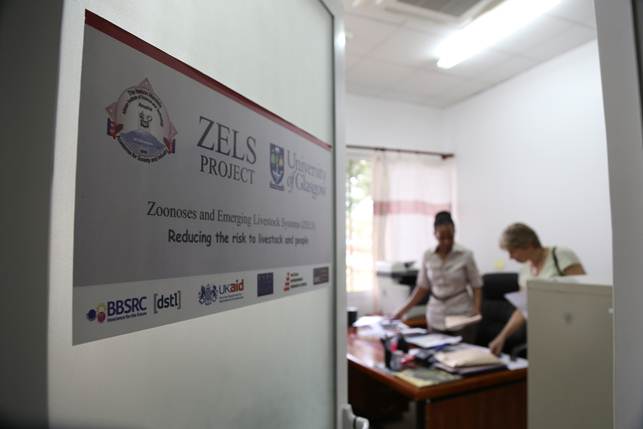Trying to see the whole picture: Social, Economic and Environmental Drivers of Zoonoses
Published: 14 May 2015
Thousands of people across sub-Saharan Africa are afflicted by zoonotic diseases each year, diseases which are preventable and treatable. Now the University of Glasgow is leading a team of partners to understand what is driving zoonotic disease transmission between livestock and people, and how we can minimize risk.

About the Project
Thousands of people across sub-Saharan Africa are afflicted by zoonotic diseases each year, diseases which are preventable and treatable. Now the University of Glasgow is leading a team of partners to understand what is driving zoonotic disease transmission between livestock and people, and how we can minimize risk.
The Social, Economic and Environmental Drivers of Zoonoses (SEEDZ) project is one of eleven projects in the Zoonoses and Emerging Livestock Systems (ZELS) initiative. The SEEDZ project is a multi-partner project that is exploring the factors affecting the transmission of three fever-causing zoonotic diseas in northern Tanzania.
Brucellosis, Q-fever and Rift Valley Fever (RVF) can lead to production losses in livestock, and chronic disability and death in humans, but are often mis-diagnosed as malaria due to their presentation of fever symptoms. The SEEDZ team, lead by Professors Sarah Cleaveland and Jo Sharp will explore the drivers of disease transmission by investigating the livestock supply chain, exploring how transmission dynamics may have changed as livestock management systems in Tanzania have shifted, and exploring the policies associated with livestock management.
The ultimate goals of this project are to understand the transmission dynamics of three disease and how human activity alters those dynamics, to identify key risk factors that can be addressed to reduce transmission and to provide information that can be useful for health professionals in their day to day working lives.
First published: 14 May 2015
Our African Partners
People
Sarah Cleaveland
Jo Sharp
Will de Glanville
Alicia Davis
Related Work
Find out more

